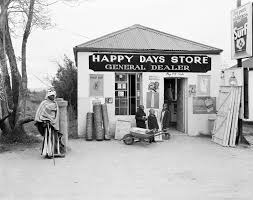
In 1877 Zachariah Bowles and his partner, a Mr Owen, established a trading store on the site of present-day Flagstaff. The Town owes its name to their practice of running a white flag up a flagstaff every Sunday as a signal to prospective customers that on this day the shop was closed. At its outset, the Postal Business of Flagstaff was carried on in a temporary Hut, a square plan building with a small thatched roof. The walls were built in sun-dried clay, without external plastering.
Flagstaff is now a Town in the OR Tambo District Municipality of the Eastern Cape province of South Africa located some 80 km South-East of Kokstad and 45 km North of Lusikisiki. It is the seat of the Ingquza Hill Local Municipality, it has an estimated total population of 279 795 people according to the Community Survey conducted by SARS. It is estimated that the population growth rate is 1.2% per annum. FThe population density in was calculated at 234 people per square kilometres, which is very high considering that the majority of the population is rural. The Municipal area is predominantly rural in nature and the majority of the population reside in the rural areas. Approximately 46% of the population of Ingquza Hill are 15 years or younger. 48% of the population are between the ages of 15 and 64 years and can be considered economically active despite the scarcity of employment in the Municipal Area. 6% of the population are 65 years and older. The burden of supporting the youth and the elderly falls therefore falls onto the shoulders of the 15-64 age groups. The high number of young people suggests that service provision and social upliftment should be targeted at the youth and should be an important consideration for development. Approximately 55% of the Ingquza Hill population is female and the remaining 45% is male. This gender distribution is in line with the national trends. The statistics reflect a discrepancy in terms of the gender distribution between the 0 – 4 age category and the other categories. The male / female ratio in this group is equal, whilst in the remaining categories the female gender is predominant. A possible explanation for this is the outward migration patterns, once children reach their teenage years. Males tend to migrate to other Areas in search of education and work, while females tend to remain behind to serve their families. "A gender sensitive approach to development is therefore needed!"